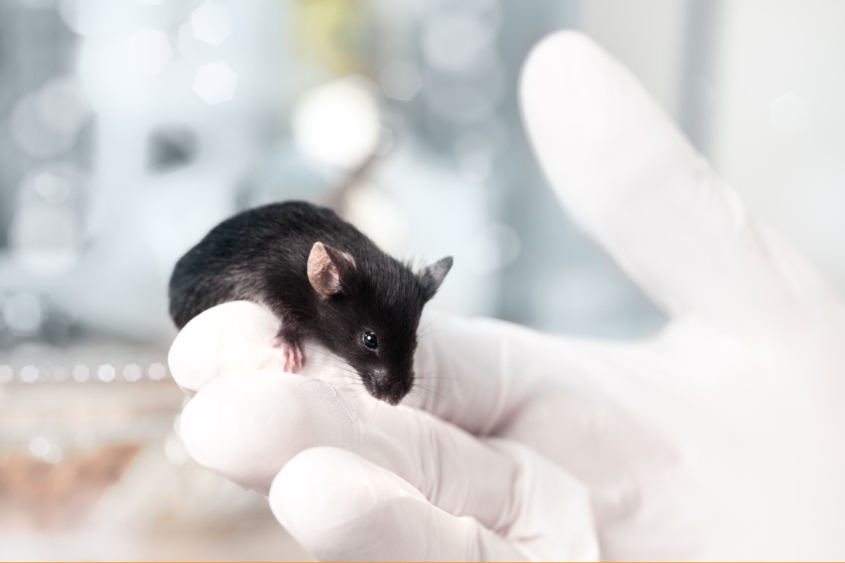Small molecule speeds up aging process
Like a reverse fountain-of-youth, researchers have identified a single small molecule, called miR-29, that drives aging in mice and monkeys. As detailed in the Communications biology paper published on August 27, scientists show that artificially increasing the levels of miR-29 in mice induces typical age-related traits, like gray hair, bone density reduction, among others.
The paper was published thanks to the resolve of seven graduate students, postdocs and technicians, 12 years of research, and the enduring collaboration of two laboratories – that of Dr. Praveen Sethupathy ’03, professor of physiological genomics and chair of the Department of Biomedical Sciences in the College of Veterinary Medicine, and of his colleague Dr. Mohanish Deshmukh, professor in the Department of Cell Biology and Physiology at University of North Carolina, in whose lab the study originated.
“To finally have this work published in 2024 is a testament to the perseverance of many people,” said Sethupathy, adding a special mention to his previous post-doc, Dr. Yu-Han (Amy) Hung, and his previous bioinformatics specialist, Dr. Matt Kanke. “It is rare for a collaborative project with limited dedicated funding to stand the test of time in this way.”
Sethupathy has studied miR-29 for the last 15 years. The small RNA, 23-nucleotides long molecule, plays a role in many conditions, including diabetes, hyperlipidemia, cancer, and pediatric Crohn's disease. In one study, Sethupathy developed mouse models with artificially high levels of mirR-29, called 29OE, and made a shocking discovery. “We found that at two months, of age these mice looked more like two years of age,” he said.
miR-29 is almost identical in mice and other mammals, meaning the molecule probably has the same function and that the findings in mice are likely to be relevant for aging in a wide variety of species, including humans.
Sethupathy cautions against viewing miR-29 as an anti-aging target. “It's more complicated than that, because miR-29 also does many other things in the body,” he said. Because of the broad role of miR-29, manipulating its levels in a person would likely affect many other physiological processes and have unintended consequences. “However, what I do think is really exciting is that the 29OE mice could be useful in studying a variety of aging-related diseases.”
Currently, Sethupathy is using the 29OE mice to investigate the role of miR-29 in necrotizing enterocolitis (NEC), a life-threatening condition of the gut that affects infants.
Reflecting on the 12-year journey of his discovery, “it feels like just as much of an accomplishment as the scientific finding itself,” Sethupathy said. “Getting a project across the finish line is as much about perseverance as it is about anything else. But if you believe in a project, you have to be intentional about keeping it in focus and not giving up on it.”
Written by Elodie Smith






